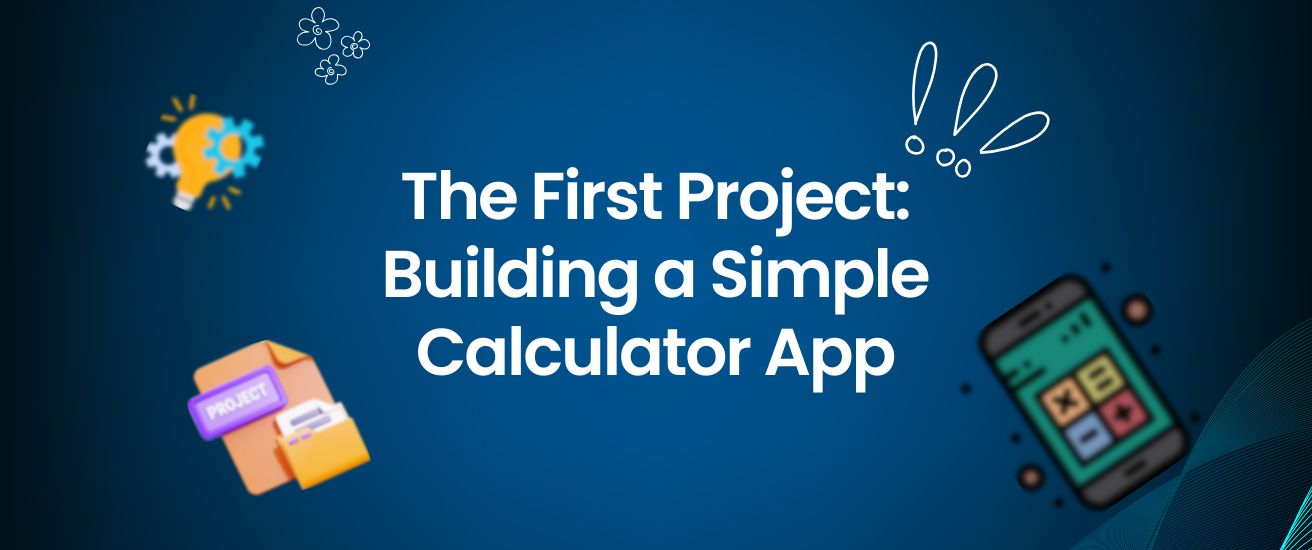
Starting your journey in programming can feel overwhelming, but the best way to learn is by building real projects. At Codeed Labs, we believe that hands-on practice accelerates learning far more than theory alone. That’s why one of the first projects we introduce to our learners is a Simple Calculator App.
This project may seem basic, but it’s the perfect foundation to strengthen your understanding of coding concepts such as input/output handling, logic building, and user interface design. Let’s dive into how this project is built, step by step.
Why Start with a Calculator App?

A calculator app is an excellent first project because it:
- Covers the fundamentals: You’ll practice working with variables, functions, and operators.
- Applies logic: Basic arithmetic operations introduce you to decision-making and flow control.
- Provides visible results: You get instant feedback when your code works — or doesn’t.
- Builds confidence: Completing your first working app motivates you to take on more complex projects.
This project strikes a balance between simplicity and usefulness, making it ideal for beginners.
Step 1: Setting Up the Project
Before coding, you need the right environment. Depending on the programming language, setup might differ slightly, but here’s a general guideline:
- Install a text editor or IDE (such as VS Code, PyCharm, or IntelliJ).
- Choose your programming language (Python, JavaScript, or Java are great beginner choices).
- Create a new project folder named
CalculatorApp. - Add a main file (for example,
calculator.pyif you’re using Python).
This setup helps you stay organized as you code.
Step 2: Writing the Core Logic
At the heart of the calculator app are mathematical operations — addition, subtraction, multiplication, and division. Here’s what the logic looks like in simple terms:
- Prompt the user to enter two numbers.
- Ask the user to choose an operation (e.g., +, -, ×, ÷).
- Perform the operation using conditional statements (
iforswitch). - Display the result clearly.
This is where beginners learn how input, processing, and output work together to create functionality.
Step 3: Making It User-Friendly
Once the core logic works, it’s time to improve the user experience. Some enhancements include:
- Looping the program so users can perform multiple calculations without restarting.
- Adding error handling to manage invalid inputs (e.g., dividing by zero).
- Designing a simple interface (if you’re learning front-end, you can create a basic calculator UI with HTML, CSS, and JavaScript).
These small improvements teach you to think like a real developer who considers usability and reliability.
Step 4: Testing Your App
Testing is a crucial part of software development. After writing your calculator code:
- Run different test cases (positive numbers, negative numbers, decimals).
- Test invalid inputs (letters instead of numbers, division by zero).
- Check if the output matches expectations.
By testing, you not only debug errors but also learn the importance of writing code that handles all possible scenarios.
Step 5: Expanding the Project
Once you’ve mastered the basic calculator, challenge yourself with advanced features:
- Add percentage or square root functions.
- Implement memory buttons like M+ or M-.
- Create a graphical user interface (GUI) using frameworks like Tkinter (Python) or React (JavaScript).
This transforms a beginner project into something more professional and exciting.
Key Takeaways
Building a simple calculator app is more than just writing code — it’s about understanding programming logic, improving problem-solving skills, and boosting your confidence as a new developer.
At Codeed Labs, we encourage learners to start small but dream big. Every professional developer started with simple projects like this before moving on to advanced applications.
Conclusion
The journey of becoming a skilled programmer begins with your first project. A Simple Calculator App may look basic, but it’s a stepping stone that lays the foundation for more complex development tasks.
If you’re eager to put theory into practice, join us at Codeed Labs, where we provide guided projects, real-world problem-solving exercises, and mentorship to help you grow from a beginner to a professional developer.
Call to Action:
Ready to build your first project? Enroll with Codeed Labs today and take your first step toward becoming a confident developer. Start small, learn smart, and grow with us.
Table of Content
 5.0
5.0
Unlock your new design team today
Get a team of skilled professionals and all the benefits that come with top-grade in-house designers—for a flat fee.
Book a free call


